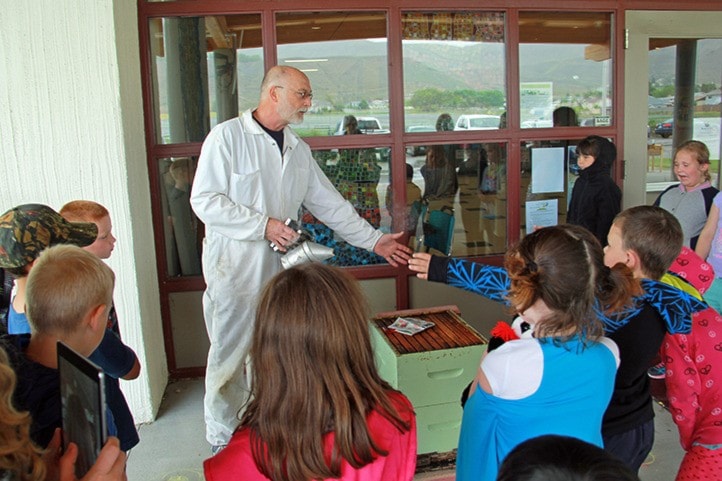Andrea Walker
Ashcroft Communities in Bloom organized a bee presentation for Ms Ellis’s Grade 2 class at Desert Sands Community School last week. David Horsley, who is a local beekeeper, came to the classroom dressed in his full beekeeping outfit and spent an hour speaking to the students about bees.
There were lots of questions, and each child in the class seemed to have his or her own interesting story about bees. Mr. Horsley brought an empty bee hive (colony) which he took apart to show the children how the bees worked together inside it.
The presentation was prompted by a contest that General Mills (Honey Nut Cheerios) and Veseys Seeds are promoting. The “Bring Back the Bees” contest encourages people to find out about bees and how valuable they are to us.
When a person enters the contest, Veseys sends them a package of wildflower seeds to plant in their yard. Wildflowers are some of the best types of flowers for bees, as well as being beautiful to look at. There are many flowers that bees particularly like, such as poppies, marigolds, forget-me-nots, dahlias, asters, and cosmos, just to name a few.
To date, 115 million packages of wildflower seeds have been distributed in this contest! If you purchase Honey Nut Cheerios you will have noticed that Buzz the Bee on the front of the package is missing, and in its place is just the outline of Buzz. According to the Bring Back the Bees website, this is to highlight the deteriorating health of bee colonies worldwide.
As Mr. Horsley mentioned to the students, bees are not only important just to make honey for us to eat; they are also a vital piece of the whole picture in our production of food.
Without bees we wouldn’t be able to enjoy fruit, vegetables, nuts, and many other things we love to eat. They are the pollinators that make it all possible, and that is why we need to help protect the bees.
